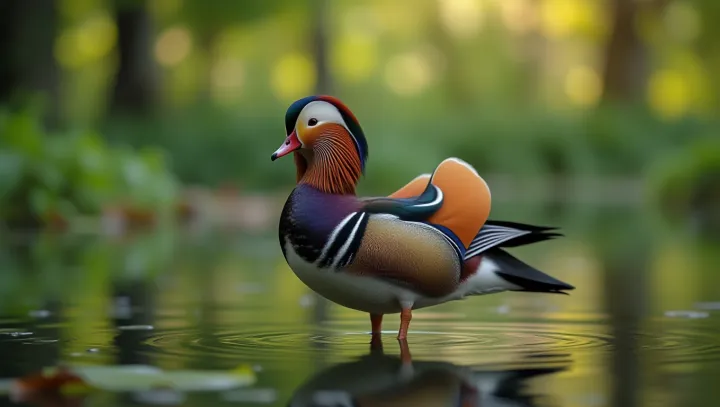Mandarin Duck: Nature's Vibrant Jewel

In the serene waters of Japan’s Lake Ashi, a dazzling avian spectacle attracts onlookers' admiration: the Mandarin Duck. Renowned for its vibrant palette of colors, the duck is internationally celebrated as one of nature's most exquisite birds, drawing birdwatchers and ecologists from around the globe. The Mandarin Duck, scientifically known as Aix galericulata, exhibits a stunning blend of vivid feathers—iridescent blues, distinct oranges, and sharp whites—that adorns the males during the breeding season, providing a sharp contrast to the more subtle hues of the females.
This apparel of striking plumage not only serves an aesthetic purpose but also functions in individual recognition among their kin. Ecologists poignantly stress the species' critical role as an ecological indicator. The presence of Mandarin Ducks often reflects healthy wetland ecosystems, which play pivotal roles in biodiversity maintenance and climate regulation.
Yet these habitats face increasing threats from human encroachment and climate change-induced weather patterns, spurring calls for intensified conservation initiatives. Dr. Emily Lin, a leading ornithologist at the Global Ecology Conservation Group, underscores the bird’s relevance.
'The Mandarin is not just a symbol of beauty but a beacon for broader environmental awareness,' she states. 'Conserving its habitat means preserving the myriad life forms that call such environments their home.' Efforts to protect the ecological niches of the Mandarin Duck are gaining momentum, drawing support from worldwide conservation bodies. Strategic conservation plans, including wetland restoration projects and sustainable development practices, are being implemented to ensure the species continues to thrive, adding its vibrant colors to the harmony of nature.
